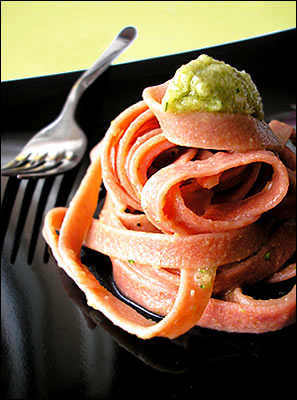
Love is in the air... la la la la la la laaaaaa! This is the week of Love, the week of lovers! Valentine's day has always represented for me the day of love, not only love for your loved one, but a more universal one. Love for the nature, love for friend and family, love for live and why not, love for food!
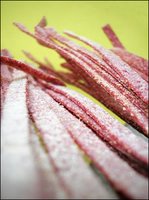
This week goes pink! After the success with the Green Matcha Tagliatelle which surprisingly Rob really liked, I said why not going pink? I have always loved betroot, most times I have them boiled and dressed with olive oil and balsamic vinegar (better if is Traditional Balsamic Vinegar of Modena, which I'll tell you about in a few posts), but betroot aren't just good boiled, so here is one idea on how to use them. The pesto I made is simple and greenish. That is to contrast with the pink and also because I wanted something simple to enhance better the home made pasta flavour. As usual, you can try with different sauces, choosing between many kind of, along with your personal tastes.
Ingredients for the tagliatelle: 500gr durum weath flour, 100gr cooked and pureed betroot, 2 glasses of water
Ingredients for the courgette pesto: 3 medium courgettes, 50gr parmigiano reggiano, 60ml extravirgin olive oil, 5 basil leaves or more, 1 garlic clove, 1 tsp salt, a pinch of pepper
Use cooked betroot or buy raw ones and cook them. Put them in the mixer and reduce them finely. Sift the flour and add the pureed betroot. Add water bit by bit and make a round soft ball. Divide the dough into 4 and work it on the pasta machine into layers of pasta first. I start with number 3 and then go to 4. If you like it thinner than go up until 5, but its best if tagliatelle remain thicker so when you cook them they don't stick. Let the tagliatelle dry on a clean table cloth or on a pasta dryer.
 To make the pest I have put all the ingredients into a blender and mixed until smooth. Add more or less oil according to the size of your courgettes and your taste.
To make the pest I have put all the ingredients into a blender and mixed until smooth. Add more or less oil according to the size of your courgettes and your taste.
Boil some water in a big saucepan, add some salt then add the pasta and let it cook for 3 minutes starting counting from when the water starts boiling again. Drain but save some water (about 6 Tbsp). Return the pasta on the gas, mix it with the pesto and toss well to blend all the ingredients and to make a nice sauce. This is very important in order to avoid sticky pasta. Add a drizzle of oil if the pasta sticks.

 Sift the flour on your working surface, work it with the egg, butter, vanilla and sugar.
Sift the flour on your working surface, work it with the egg, butter, vanilla and sugar.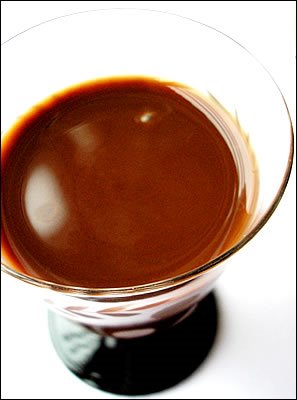
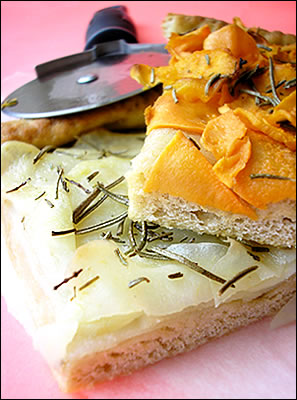

 Scrub the oranges and cut them in half. Squeeze the juice and pips into a basin. Cut up the peel into thin strips or chunks, as preferred.
Scrub the oranges and cut them in half. Squeeze the juice and pips into a basin. Cut up the peel into thin strips or chunks, as preferred.
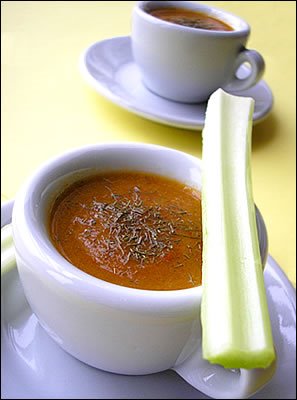




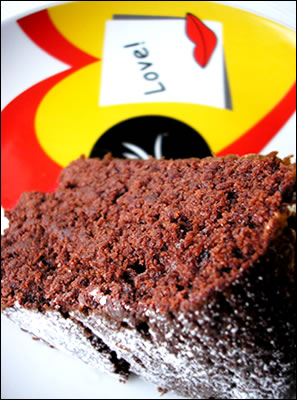

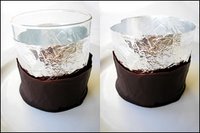 To make the chocolate glasses wrap some kitchen foil around a glass. Deep the glass with the kithen foil in melted fondant chocolate. Make the excess of chocolate leak from the glass then put the glass on a serving plate. Remove the glass carefully and leave the foil to stand on the plate with the chocolate. Put it in the fridge for 1 hour and let it solidify. Remove then the kitchen foil carefully and you will get the chocolate glass. Its best to give it a few try perhaps with different glasses sizes as well. Also remember that once the chocolate is set, it will be impossibile to remove it from the plate. If you want to use another plate for serving the chococlate glass, put a layer of kitchen foil between the plate and the chocolate glass.
To make the chocolate glasses wrap some kitchen foil around a glass. Deep the glass with the kithen foil in melted fondant chocolate. Make the excess of chocolate leak from the glass then put the glass on a serving plate. Remove the glass carefully and leave the foil to stand on the plate with the chocolate. Put it in the fridge for 1 hour and let it solidify. Remove then the kitchen foil carefully and you will get the chocolate glass. Its best to give it a few try perhaps with different glasses sizes as well. Also remember that once the chocolate is set, it will be impossibile to remove it from the plate. If you want to use another plate for serving the chococlate glass, put a layer of kitchen foil between the plate and the chocolate glass.



 To make the pest I have put all the ingredients into a blender and mixed until smooth. Add more or less oil according to the size of your courgettes and your taste.
To make the pest I have put all the ingredients into a blender and mixed until smooth. Add more or less oil according to the size of your courgettes and your taste.
 Rob, my husband, has finally decided that "It's no fair to live at the sea side if you can't go fishing!" It was about time he realised it! We have been living in Devon for 2 years now, but moved in the Torbay area only a month ago. Today we decided to go for a walk, just across the road where we live and here is what we found at Hope's Nose. One of the best place to go fishing in the Torbay area, favoured by many local fishermen. In fact we found many of them, young and older, all happily fishing!
Rob, my husband, has finally decided that "It's no fair to live at the sea side if you can't go fishing!" It was about time he realised it! We have been living in Devon for 2 years now, but moved in the Torbay area only a month ago. Today we decided to go for a walk, just across the road where we live and here is what we found at Hope's Nose. One of the best place to go fishing in the Torbay area, favoured by many local fishermen. In fact we found many of them, young and older, all happily fishing! with this beautiful seal. She came on the surface all of a sudden, I was so excited I couldn't believe it, I kept pressing on my camera but couldn't really take nicer pictures than these. She was moving too quickly and I was shaking!
with this beautiful seal. She came on the surface all of a sudden, I was so excited I couldn't believe it, I kept pressing on my camera but couldn't really take nicer pictures than these. She was moving too quickly and I was shaking! A fisherman fed her with a squid to attract her attention, she ate it, then went fishing for something bigger than that! This picture on the left shows Hope's Nose from the top of the hill. The place is also known as the Cardiac Hill as its really easy to go down but very steep to come back! Luckily we are fit enough for that, nevertheless it was quite tiring.
A fisherman fed her with a squid to attract her attention, she ate it, then went fishing for something bigger than that! This picture on the left shows Hope's Nose from the top of the hill. The place is also known as the Cardiac Hill as its really easy to go down but very steep to come back! Luckily we are fit enough for that, nevertheless it was quite tiring. It has also made me realize that its about time I learnt to swim. The plan for now is to buy a good rod and that we keep on trying. Well, Rob will, perhaps. I vision myself in a couple of weeks on the small bay, setting up the fire for a nice barbecue, wearing only a shell's skirt while Rob is on the other side fishing patiently. As if we were Adam and Eve. To complete the vision, I can only think of having some good friends around and a few bottles of white wine. Anyone?
It has also made me realize that its about time I learnt to swim. The plan for now is to buy a good rod and that we keep on trying. Well, Rob will, perhaps. I vision myself in a couple of weeks on the small bay, setting up the fire for a nice barbecue, wearing only a shell's skirt while Rob is on the other side fishing patiently. As if we were Adam and Eve. To complete the vision, I can only think of having some good friends around and a few bottles of white wine. Anyone?
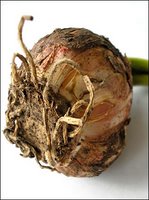 This is a gift from my mother who leaves in the south of Italy, now dated a couple of weeks back. Fortunately, these can last long by storing them in a dry and cold place, maybe on the terrace, considering these days’ temperatures. The Lampascioni are for all Apulian a delicious treat. The scientific name of this flower bulb, because this is what it is, is Muscari comosum, a wild flower which grows all over
This is a gift from my mother who leaves in the south of Italy, now dated a couple of weeks back. Fortunately, these can last long by storing them in a dry and cold place, maybe on the terrace, considering these days’ temperatures. The Lampascioni are for all Apulian a delicious treat. The scientific name of this flower bulb, because this is what it is, is Muscari comosum, a wild flower which grows all over  Lampascione looks a bit like a little onions or shallots. They can be cooked in a few different ways, the most common being: boiled and served with olive oil, fried, with tomatoes, with dry salted cod (Baccalá) or preserved in oil. They must be cleaned as an onion and left in cold water for some time to remove all the remaining soil. In the Murgia, the wildest Apulian region, they are often cooked under hot wooden ashes then dressed with olive oil and salt. That’s the best way to maintain their wild taste. If you know where to find these in England, please let me know!
Lampascione looks a bit like a little onions or shallots. They can be cooked in a few different ways, the most common being: boiled and served with olive oil, fried, with tomatoes, with dry salted cod (Baccalá) or preserved in oil. They must be cleaned as an onion and left in cold water for some time to remove all the remaining soil. In the Murgia, the wildest Apulian region, they are often cooked under hot wooden ashes then dressed with olive oil and salt. That’s the best way to maintain their wild taste. If you know where to find these in England, please let me know!



 = Vegetarian
= Vegetarian = Vegan
= Vegan = Not Veg
= Not Veg